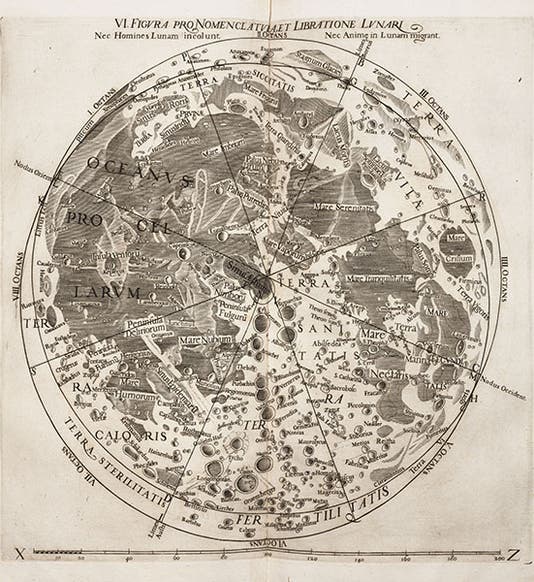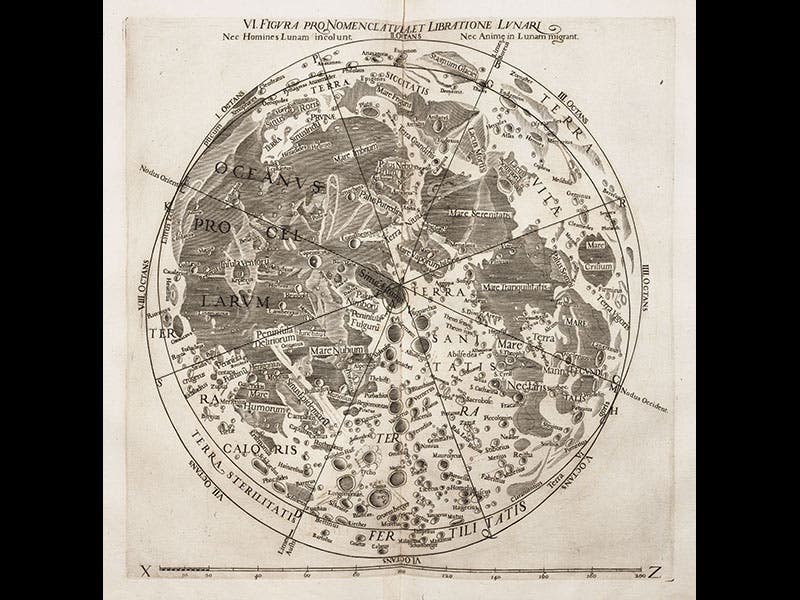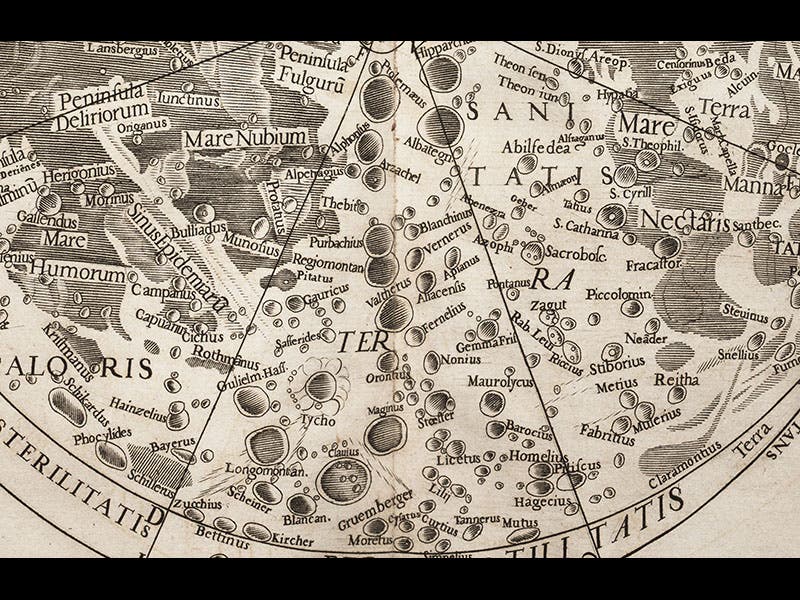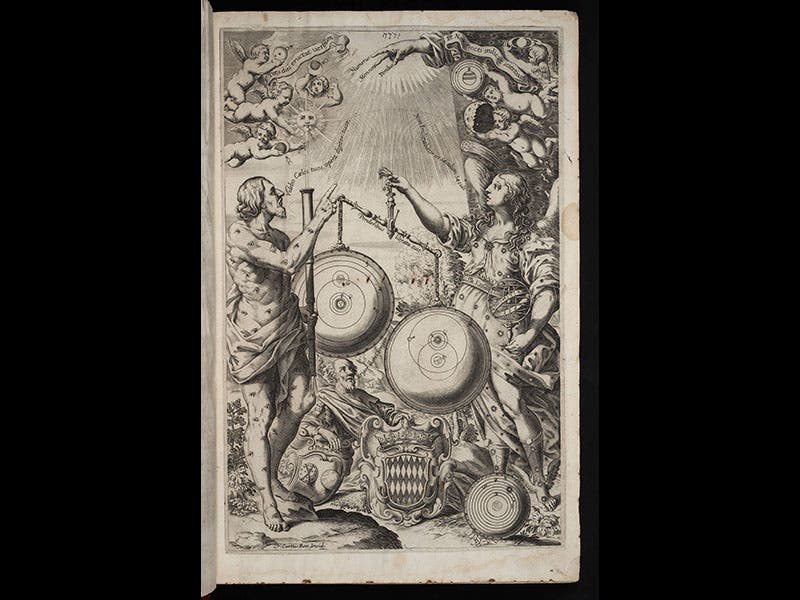Scientist of the Day - Giovanni Battista Riccioli
Giovanni Battista Riccioli, an Italian astronomer, was born Apr. 17, 1598. Riccioli was a Jesuit, which means that, after the condemnation of Galileo in 1633, he was responsible for defending the Church's position denying the motion of the earth. In 1651, he published the most up-to-date astronomical encyclopedia of the century, the Almagestum novum, which took its name from the Almagest written by the great ancient (and geocentric) astronomer, Ptolemy. But in spite of its dependence on an old cosmology, Riccioli's New Almagest contains a number of novelties, one of which is a new moon map, designed by Francesco Grimaldi, with a new system of lunar nomenclature provided by Riccioli.
Riccioli chose to name the craters on the moon after people, such as Plato and Tycho (second image), and to call the dark, sea-like areas after moods or meteorological phenomena, offering us Oceanus Procellarum and Mare Tranquilitatis (the Ocean of Storms and the Sea of Tranquility) (third image). Oddly, Riccioli rewarded Copernicus and his followers, such as Kepler, with very prominent craters in the Ocean of Storms. Riccioli even placed his own crater, Ricciolus, near the Copernicans (fifth image), instead of with the other Jesuits surrounding the crater Tycho (fourth image), suggesting that perhaps he was more sympathetic to heliocentrism than he should have been. We featured the Riccioli/ Grimaldi map in our exhibition, The Face of the Moon: Galileo to Apollo.
Riccioli’s Almagestum novum also has a splendid engraved title page (sixth image), rich in cosmological emblematic imagery, which we will dive into on a future occasion.
Dr. William B. Ashworth, Jr., Consultant for the History of Science, Linda Hall Library and Associate Professor, Department of History, University of Missouri-Kansas City. Comments or corrections are welcome; please direct to ashworthw@umkc.edu.












